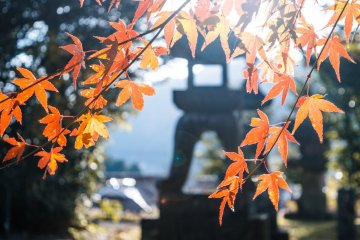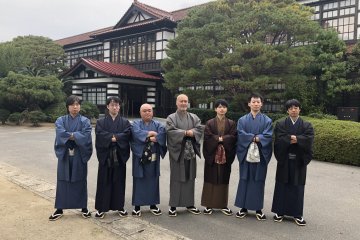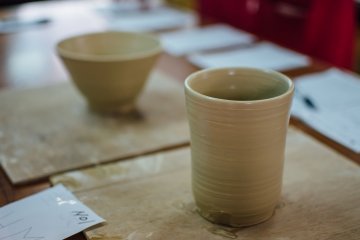As a former castle town overlooking the serene coastline of the Sea of Japan, Hagi was once the capital for one of the most powerful clans during Japan’s feudal period. Located in Yamaguchi Prefecture, small in size but big on sights—modern-day Hagi retains all its charms of bygone eras.
In 1604, the Mori clan (daimyo of the domain) built Hagi Castle at the foot of Mount Shizuki—thereby moving the Mori capital from Hiroshima to Hagi. The small port city would go on to become a major political center for more than 250 years.
The castle town’s narrow streets are lined with samurai-era houses. Renowned as the hometown of Hagi-yaki pottery or Hagi ware, the city is steeped in manmade cultural wonders as well as plentiful natural splendor. Trace the steps of Japanese history, step by step, as you wander your way through Hagi.
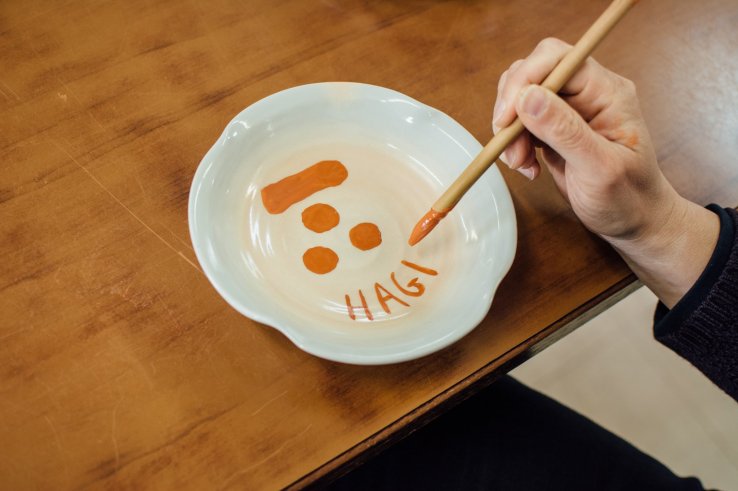
Discover history and pottery culture
Museums dot Hagi City—including Hagi Museum, a modern facility opened in 2004, which exhibits Bakumatsu-period documents as well as local crafts. Indeed, one cannot mention Hagi without mention of its exquisite pottery, known as Hagi-yaki and regarded for its natural, warm tones and beautiful translucent glaze work. Even today, more than one hundred kilns still stand with many offering a hands-on experience of making your own Hagi-yaki piece.
The town has also been blessed with a peaceful location, relatively free of major disasters, and indeed, the city has remained largely unchanged from its original layout and plans. Visitors to Hagi will relish the beautiful samurai and merchant residences that have been dutifully preserved and are even open to the public.
Japanese culture abounds in Hagi and every moment of your journey through the city, and region, at large, will be touched by the deep history that makes this former castle town a treasure to explore.
Top attractions in Hagi
Although there are numerous historic sites and attractions in Hagi, here is a shortlist of some of Hagi’s top must-visit places:
Castle Town
Perhaps the main attraction of Hagi is the district that has remained preserved throughout the ages. With stunning earthen walls, the castle town is huddled together in the northwest of Hagi.
With the district being home to numerous samurai and merchants of the past, modern-day visitors can practically taste the history as you breathe the air here. Castle town also has many impressive claims to fame and open houses to entice you further inside the residencies opened for the public to enjoy.
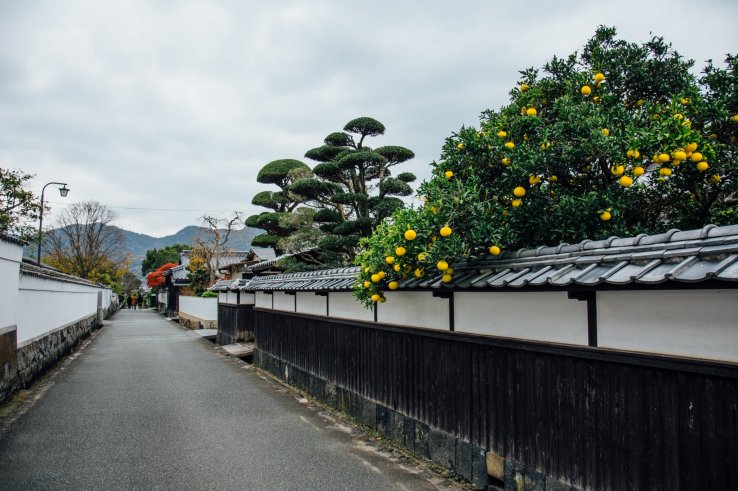
Shoin Shrine
Standing stoically in eastern Hagi, Shoin Shrine holds the deification of Yoshida Shoin, a man whose disciples played major roles during the Meiji Restoration. Rest in the shadows of the great scholar’s legacy.

Tokoji Temple
This family-grave temple (Bodaiji temple) was erected to honor the Mori lords of the past. The graves sites of the Mori clan stand behind the impressive vermilion gate at the entrance of the temple. The mystical atmosphere of the stone lanterns can be enjoyed in any season.

Hagi Castle
Although today’s Hagi Castle is but a mere ruin of its former glory, visitors to the site can still admire the resplendent vista people of the past most surely enjoyed. In spring, hide beneath the shade of rows of flowering cherry trees. This site was declared a UNESCO World Heritage Site in 2015.
What's on the culinary menu?
Like anywhere in Japan, Hagi is home to mouth-watering foods. When you dine in this castle town of long ago, expect to be in for a treat! Of special note is seafood from Hagi, especially squid, sea urchin, amadai fish, and Hagi pufferfish—enjoy them in their peak seasons for outstanding freshness.
If seafood is off the menu for you, why not enjoy Kenran beef, bred from an indigenous and Holstein cross, this tender beef is marbled and rich. Mutsumi pork is also valued for its soft, juicy, and sweet flavor.
In summer, be sure to enjoy Hagi summer oranges. With a bittersweet fragrance and sour flavor, they make for a popular treat that can’t be beaten. You will definitely see them as souvenirs, processed as jelly, ice cream, or marmalades.
Transportation guide
Getting to Hagi:
By land: Reach Hagi whether you are in Tokyo or Osaka. When you arrive at Shinyamaguchi Station, you can take a bus to get to Hagi that only takes around 60 to 90 minutes.
By air: If you’re flying to Ube Yamaguchi Airport from Tokyo, it will take about 95 minutes. From the airport take a 35-minute bus to Shin-Yamaguchi Station and transfer to the Hagi bus, which takes 60-90 minutes.

Getting around Hagi:
And for traveling ease, why not buy a one-day or two-day pass for the Hagi circular Hop-On bus. Typically, the bus costs only ¥100 “no matter how far”—but if you’re planning on seeing everything that Hagi has to offer, you’ll definitely want to save your money with a day pass. These passes can be purchased from the bus center or tourist bureau.
For most destinations in Hagi, you need look no further than your own two feet or, if you prefer, perhaps rent a bicycle near either of Hagi’s tourist information centers.
For those with mobility issues or those who want easy access to the best sights of Hagi, the red loop bus (Hagi Maru Bus) drives on two routes—east and west—from 7 am to 6 pm every day. And at only ¥100 a ride, it’s practically a steal!
Another fun way to see the city while traveling through the city is to enjoy a Hagi sightseeing boat cruise. Begin near Hagi Castle and proceed down the river and beyond as you view islands, beaches, and residential districts of samurai-era Japan from the sea.
Other services
While in Hagi, enjoy free Wi-Fi where available. You’ll be connected during your sightseeing trip and be able to store photos effortlessly as you travel. If you need assistance setting-up your Wi-Fi or, more importantly, deciding where to go next then be sure to visit the good people at Higashi Hagi Station Tourist Information Center, Hagi City Tourism Association, or Hagi Onsen and Ryokan Association—any one makes for a great first step in Hagi and they will point you in the right direction.





